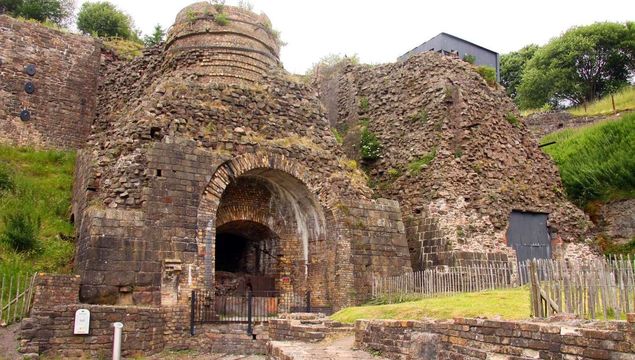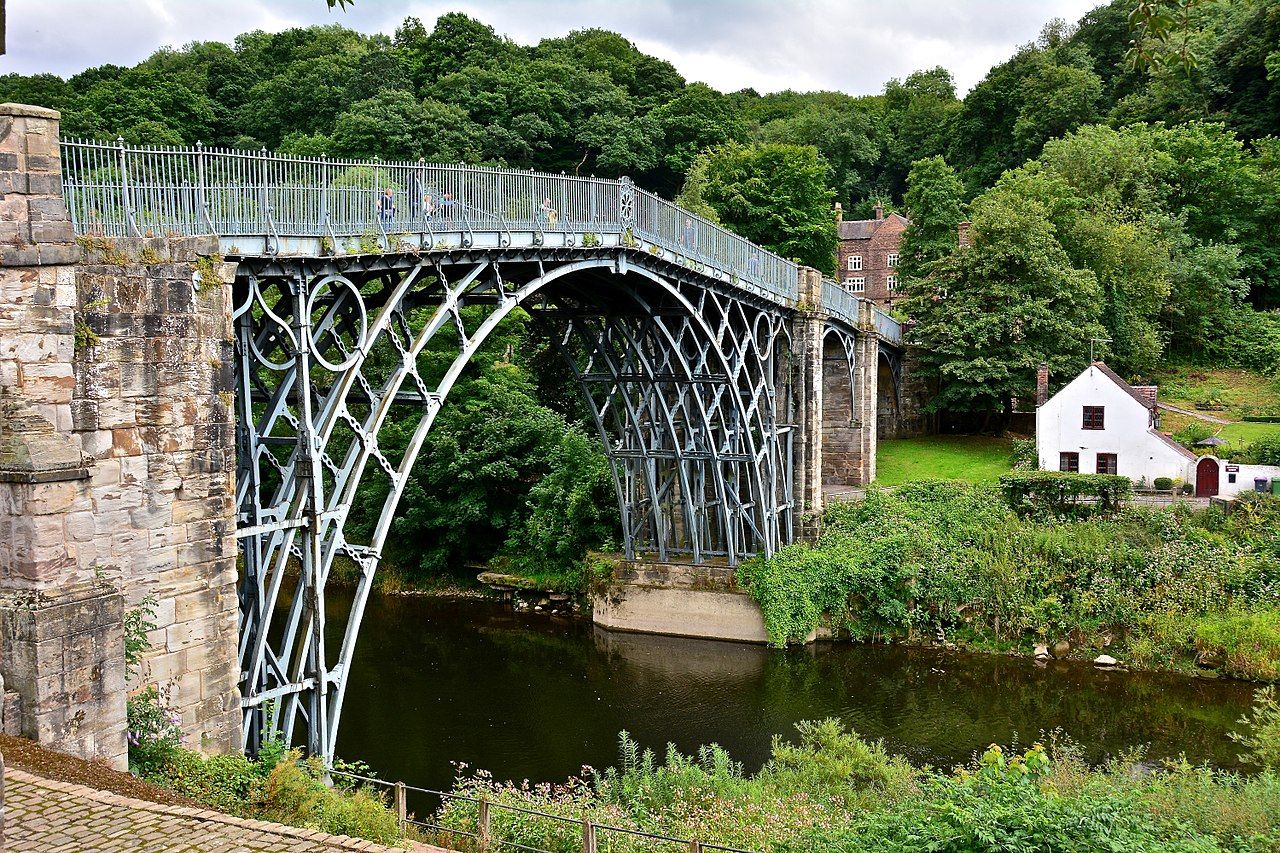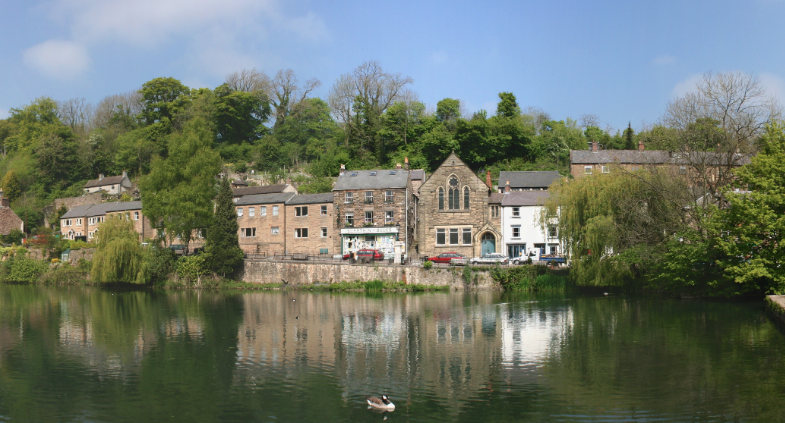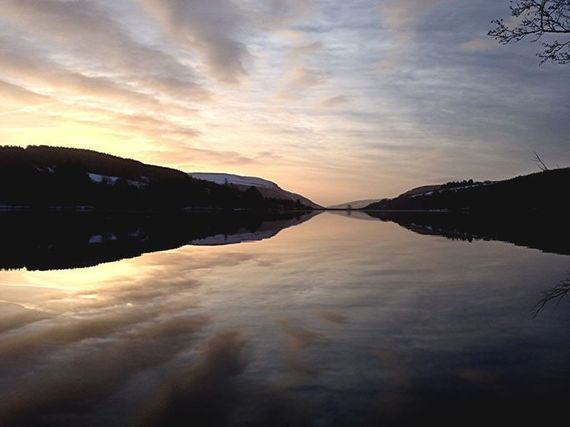
Blast furnesses at Blaenavon Ironworks, Monmouthshire.Steve Daniels / Creative Commons
Scores of industrial history museums unpack the tale of the Industrial Revolution. Here are 10 great visits that help tell the story.
For untold centuries, Great Britain was a rural, agrarian island, where wealth, power, and the way of life were inextricably tied to the land. That all began to change rapidly in the 1700s. The smelting of iron into steel with coke and the production of textiles first with water, then with steam engines, demanded coal: All of these needed workers – who flocked to the growing towns as economic migrants in search of a better way of life than the hardscrabble agricultural life could ever provide.
Ironbridge Gorge, Shropshire

Ironbridge Gorge, Shropshire.
Ten fascinating museums line the Severn River valley known as the “Birthplace of the Industrial Revolution,” where Abraham Darby perfected the smelting of iron with coke instead of charcoal in 1709. The centerpiece is the world’s first iron bridge, opened in 1781. Don’t miss Blists Hill Victorian Town, Darby’s original furnace, and the Jackfield Tile Museum.
Read more: A history of the British cotton industry
Blaenavon Ironworks, Monmouthshire
The best-preserved 18th-century ironworks in the world. It was cutting edge technology for its time, with coal, iron, and limestone loaded into the huge furnace tops and molten metal drawn off and cast at the bottom. See the whole process and the squares of workers’ cottages in the furnace shadows displaying a way of life hard to imagine today.
National Railway Museum, York
Nothing in history so radically and quickly transformed the movement of goods and people as did the railways. Railway museums abound across Britain, but nothing tells the complete story like York’s, adjacent to historic York Station. The mammoth complex includes working engineering sheds and locomotives under steam and unpacks both the social and technological story of rail.
Quarry Bank Mill, Cheshire
Built in 1784, the giant cotton mill at Quarry Bank is fully functional, showcasing every step turning baled cotton into cloth. The complex also includes the gorgeous home and gardens of owner Samuel Greg and the Apprentice House, which housed scores of indentured orphaned child workers. Then stroll into the village of Styal where Greg built workers’ cottages, a school, and chapel.
Read more: Traveling through the history of Britain's textiles
Amberley Chalk Pit Museum, West Sussex
Devoted to the industrial heritage of the South Downs, Amberley’s 36-acre campus explores eclectic exhibits beginning with vintage buses and a narrow-gauge railway providing free transport around the site. Visit the electric hall, lime kiln, printing workshop, telecommunications exhibition, and more.
Gladstone Pottery Museum, Staffordshire
The last complete Victorian china factory in Britain retains the original workshops and mammoth bottle kilns that made Stoke-on-Trent world-famous for its bone china ceramics. See all the traditional crafts once typical of hundreds of factories large and small that put Staffordshire on the map and employed its workers.
Llechwedd Slate Caverns, Snowdonia
The steepest cable railway in Britain leads 500 feet and 160 years into Llechwedd’s mountain where slate was cut for generations. Or take the Quarry Explorer on a guided off-road adventure to the man-made landscape of the slate mountains 1400 feet above sea level. At the workshop, watch slate splitting and learn the story of the workers and the slate shipped around the world. llechwedd-slate-caverns.co.uk
Cromford Mill, Derbyshire

Cromford Mill Pond, Derbyshire
The first water-powered cotton spinning mill in the world transformed textiles from a cottage industry to a factory system. Built by Sir Richard Arkwright in 1771 on the River Derwent, today the award-winning mill complex includes guided tours of the mills, canal boat trips, shops and galleries, and the workers’ village of Cromford.
Black Country Living Museum, West Midlands
West of Birmingham, the Black Country emerged in the 1830s as the first industrial landscape in the world, with blast furnaces, forges, and manufacturers of hardware, structural ironwork, and more. With historic buildings brought from across the region, this open-air village recreates the way of life and people of another time.
Rhondda Heritage Park, South Wales

Rhondda Valleys.
Coal was king in the Rhondda valleys for 100 years. At the Lewis Merthyr Colliery near Pontypridd discover life in the pits and the coal mining communities that lined the valleys. Take a Black Gold Underground tour through one of the mine shafts with a former collier. Then, board a virtual reality ride with the last dram of coal brought to surface in the valleys.
Read more: When coal was king in the Welsh valleys of the Rhondda





Comments